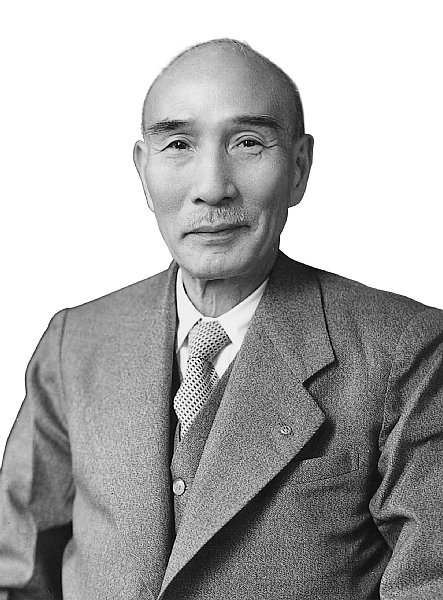Section 6. Postwar Arrangements and Labor Disputes
Item 6. Labor Disputes and President Kiichiro's Resignation
Resignation of President Kiichiro Toyoda
At the 21st round of collective bargaining on May 27, 1950, among the agenda items proposed by the labor union was the resignation of the President, the Executive Vice President, and Managing Director Nishimura. This subject was raised during the ongoing discussions on the company reconstruction proposals between labor and management because two days earlier on May 25, President Kiichiro Toyoda had announced before a meeting of the officers of the Toyota National Dealers' Advisory Council that he accepted responsibility for the labor disputes and would resign. The company explained that President Kiichiro intended to resign and that his successor would be Taizo Ishida, President of Toyoda Automatic Loom Works.
Meanwhile, during the almost two-month-long labor dispute, production had fallen behind and the worsening of the business situation took on a still greater level of seriousness. The putting into practice of the company reconstruction proposals could be delayed not a moment longer, and at the 25th round of collective bargaining on June 4, the company presented the labor union with a written document appealing for a speedy resolution, as part of efforts to achieve acceptance of the company reconstruction proposals centered on job cuts. Through the recruitment of voluntary retirees-which was progressing in parallel with the collective bargaining-a staff reduction of 1,600 had been targeted, and by June 6 the number of volunteers had reached around 1,700.
At the 29th round of collective bargaining on June 8, as a result of discussions lasting through the night, the labor union decided on the early morning of the 9th to accept the company reconstruction proposals. The main points of the memorandum which was concluded and signed by labor and management on the next day, the 10th, were as follows:
1) Job cuts
The labor union accepts the retirement of the voluntary retirees.
The company, having taken note of the opinions of the labor union, accepts the reinstatement of some 160 of the retirees.
When the company takes on staff in the future, priority will be given to the staff retiring on the present occasion.
The company and labor union will make efforts to find new employment for the retirees.
2) Wage cuts
The labor union accepts a wage cut for remaining staff (10 percent from June 16).
3) Personnel reforms
The company will undertake bold reform of personnel organization, in which it will take note of the opinions of the labor union.
The conclusion of negotiations with the labor union meant the confirmation of the closure of the Shibaura and Kamata Plants in Tokyo, which had been part of the company reconstruction proposals. There were 2,146 job losses, including 378 at the two plants. A staff of 5,994 remained (including 350 in the sales division).
The labor dispute that began on April 11, 1950, was thus brought to an end after two months on June 10. But before that, on June 5, President Kiichiro, Executive Vice President Kazuo Kumabe, and Managing Director Kohachiro Nishimura accepted responsibility for the labor dispute and resigned. Furthermore, at an extraordinary general shareholders meeting on July 18, all corporate officers made a collective resignation, new officers were elected, and Taizo Ishida, president of Toyoda Automatic Loom Works, was appointed concurrently to the position of president of Toyota Motor Co., Ltd. Fukio Nakagawa, director of the Osaka Office of the Teikoku Bank (now, Sumitomo Mitsui Banking Corporation), was appointed as a new senior managing officers.



